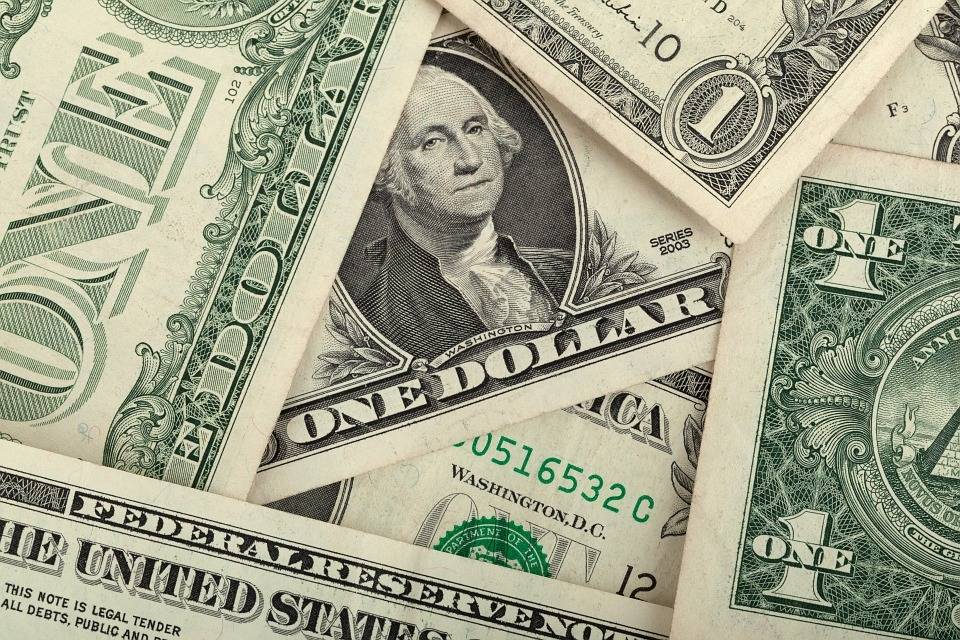The rate futures market is pricing in a 75 per cent chance of a 75 basis-point lift-off in June and a further 200 basis points of hikes this year…reports Asian Lite News
The rupee weakened to hit a fresh all-time low early on Monday, trading beyond 77.40 per dollar, driven by investors’ preference for safety as lockdowns in China, war on the edge of Europe and fear about higher interest rates sent a nervous jolt through markets.
While on Friday, the Indian currency ended close to its all-time lows of 77.05 hit in March, it weakened sharply today and was last trading at 77.42 per dollar, according to the latest quote from PTI and Reuters.
The flight-to-safety trades have pushed the dollar strength, with bids for the greenback accentuated since Russia attacked Ukraine late in February on supply disruption fears leading to runaway inflation and higher global interest rates, bringing forward the next recession.
The dollar scaled close to its two-decade highs, gaining for a fifth consecutive week after the Federal Reserve hiked its benchmark funds rate by 50 basis points and strong jobs data on Friday there reinforced bets on further big hikes.
The rate futures market is pricing in a 75 per cent chance of a 75 basis-point lift-off in June and a further 200 basis points of hikes this year.
US inflation data this week and several Fed policymakers scheduled to speak will keep the hawkish rhetoric in place as the Russia-Ukraine in its third month shows no signs of letting up, boosting expectations for the dollar to be well-bid.
The net capital outflows have not helped the Indian currency, with foreign investors pulling out over ₹ 6,400 crore from the Indian equity market in the first four trading sessions in May and remaining net sellers for seven months to April 2022.
That has weighed on the Indian currency when international crude prices have risen sharply and traded above $100 on average for the third month on supply disruptions from the Russia-Ukraine war.
The widening trade bill as the country imports 85 per cent of its oil needs, a stronger dollar, elevated crude prices, surging inflation and expected tighter monetary policy have spooked investors.
While the RBI, in an emergency meeting last week, hiked its key interest rates, runaway inflation risks are rising even as fears of a slowdown in economic growth activity persist.
“With central banks worldwide pressing the panic button and increasing interest rates. Foreign investors continue to sell relentlessly,” Vijay Singhania, Chairman at TradeSmart, told PTI.
Despite the RBI raising rates, the expected interest rate differential dynamic and flight-to-safety trades point to a gloomy mood.
“A series of rate hikes and hawkish communication came against a backdrop of plummeting Chinese and European activity, new plans for Russian energy bans and continued supply-side pressures,” warned analysts at Barclays, Reuters reported.
“This creates the gloomy prospect of persistent inflation forcing central banks to hike rates despite sharply slowing growth.”
Indian bourses too started May on a weak note, after losing over 2 per cent in April. With inflation data for April due and International developments not too appealing, broad investor sentiment points to more downside.

“We are victims of that time when the rupee is hitting an all-time- low due to multiple reasons. To describe a few points- a stronger USD, weaker Asian currencies, rebound in oil prices, ongoing Russia-Ukraine war, FII outflow, and a surprise hike by the RBI to tackle inflation could be the major reasons,” noted CR Forex Advisors.
“Friday’s job report boosted the US yield and thus the DXY (dollar index). Moving forward, the RBI’s intention will be closely watched,” added CR Forex Advisors.
India’s forex reserves crashes
India’s foreign exchange (FX) reserves fell below $600 billion for the first time in a year, weighed by persistent capital outflows and the rupee’s weakness driven by the dollar’s broad surge in recent months.
The latest data from the Reserve Bank of India (RBI) showed the country’s FX reserves fell by $2.695 billion to $597.728 billion, marking the eighth straight week of declines. The last time the country’s import cover fell below the $600-billion-mark was during the week ending May 28, 2021.
The latest week’s data was also the lowest since end-April last year when the country was battling its worst wave of the coronavirus pandemic. Back then, hospitals across the country were scrambling for beds and oxygen in response to a deadly second surge in infections; the World Health Organization (WHO) had said in a report that India accounted for nearly half the coronavirus cases reported worldwide and a quarter of the deaths during that period.
This year, though, the fallout from the Russia-Ukraine war has weighed on global supply chains, leading to runaway inflation and, in turn, has forced major central banks on a tightening policy path.
India’s forex reserves have declined nearly $34 billion, or about 5.4 per cent, since Russia invaded Ukraine on February 24. That import cover wiped out in just two months is about what the country took to build in a year.

The fall in FX reserves started during the week ending March 11, when the rupee hit its all-time lows.
The Indian currency’s weakness was driven largely by the greenback’s broad surge led by expectations of a very aggressive US Federal Reserve’s monetary policy path and the RBI’s intervention through dollar sales by Indian state-run banks.
While the import cover is still a healthy near-$600 billion, it has fallen to its lowest in a year, and the latest trade moves in the rupee point to further erosion of the country’s FX war chest.
ALSO READ-LIC IPO sees strong interest

